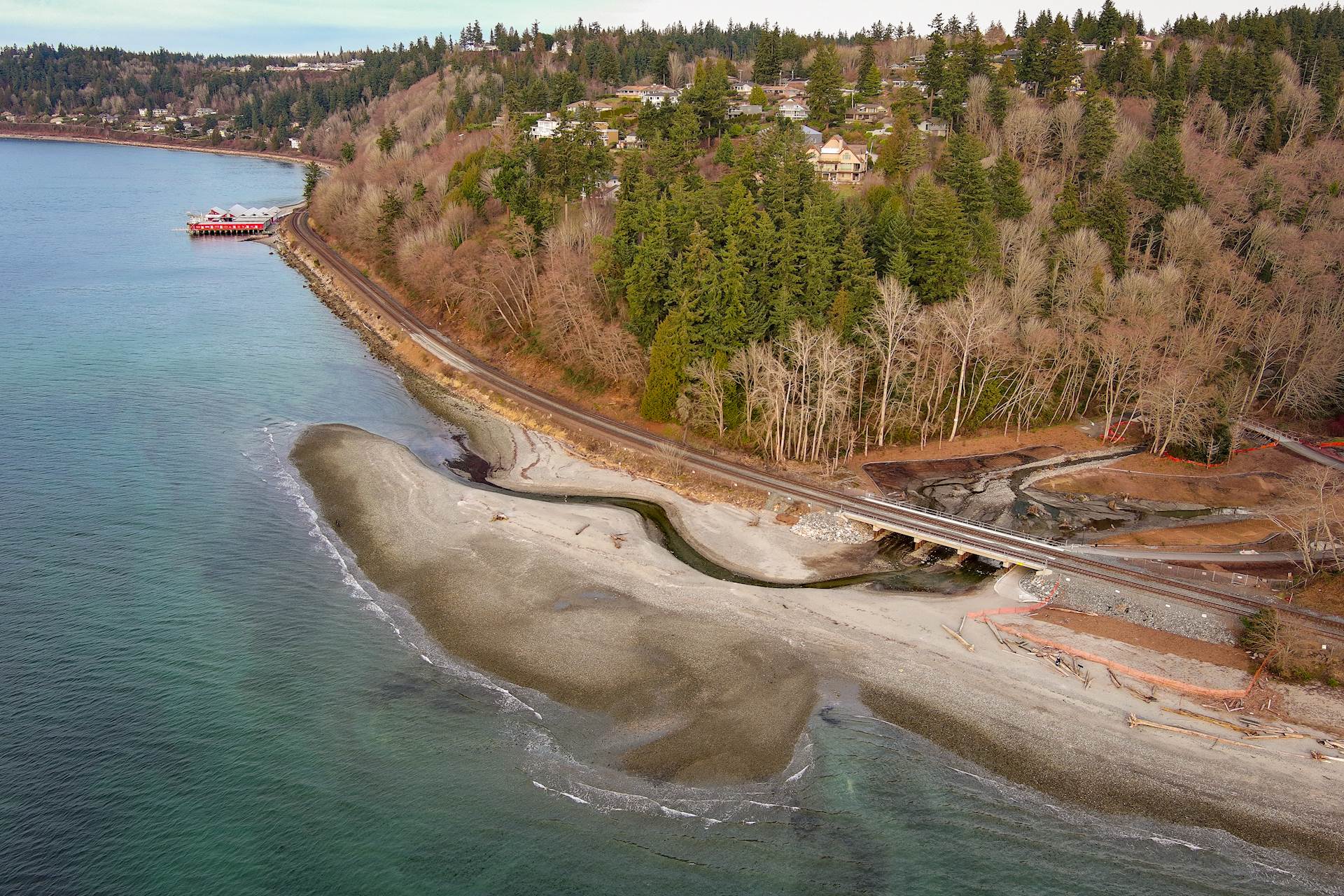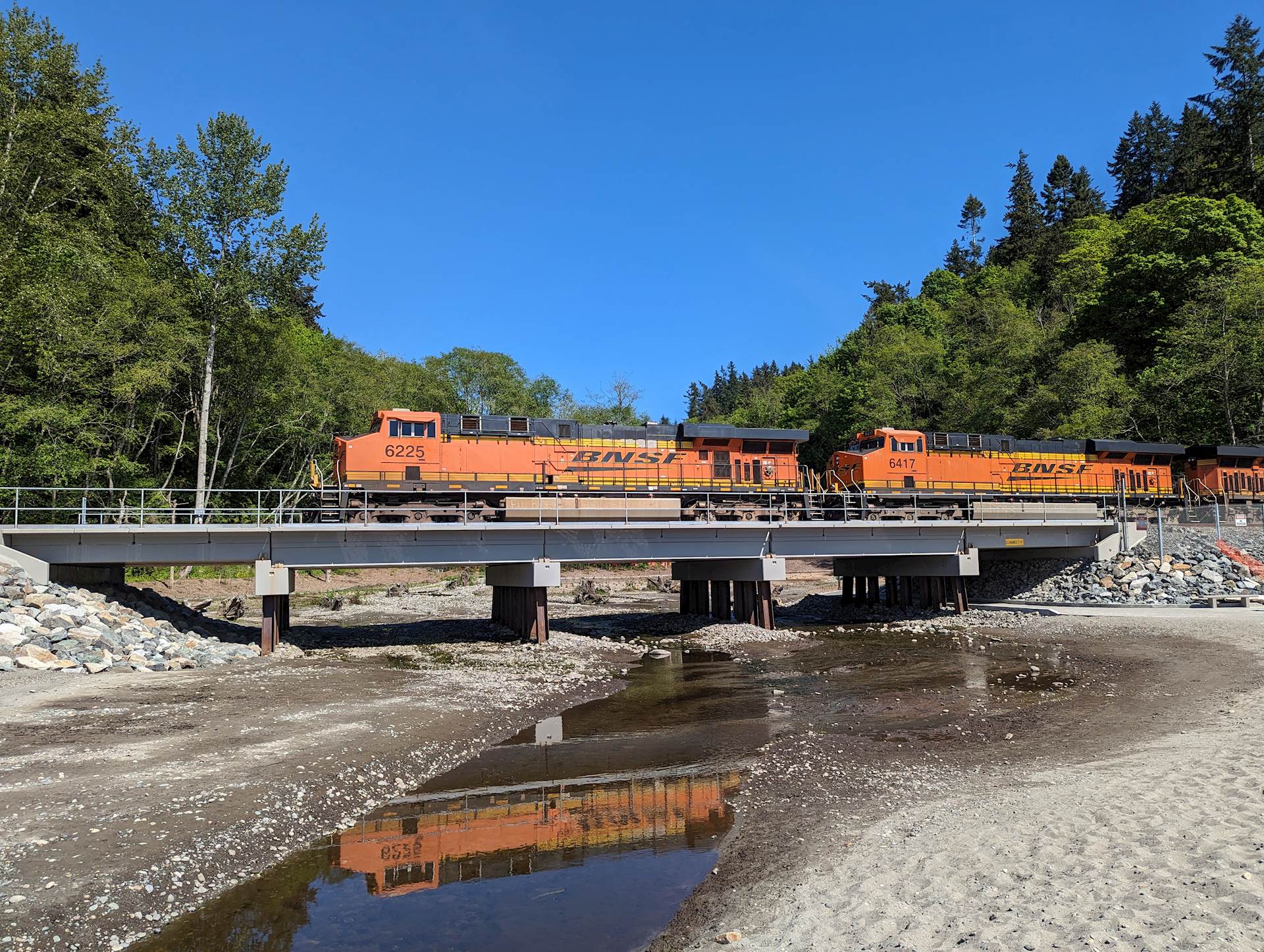 The completed rail project at Meadowdale Beach Park in Washington’s Snohomish County gives fish, such as juvenile salmon, access their natural habitat.
The completed rail project at Meadowdale Beach Park in Washington’s Snohomish County gives fish, such as juvenile salmon, access their natural habitat.
The construction of railroads and other infrastructure has historically been a major driver of economic growth and development. However, these developments can have significant negative impacts on natural ecosystems. The Puget Sound shoreline has over 70 miles of railroad tracks. Along this important infrastructure of the Pacific Northwest, multiple freshwater streams connect to the shore via culverts. Despite being engineered for the passage of water and fulfilling their drainage function, these structures often create barriers for fish and other aquatic organisms, limiting their feeding, migration and reproductive area.
Fish are ecologically, economically and culturally important for the Pacific Northwest. Creating and restoring fish passages has gained momentum in the United States for over a decade. Recent federal funding has increased opportunities to restore ecosystem functions while designing and building safe and resilient transportation infrastructure. Hanson has become involved in related projects in the past few years.
 A crew performs sheet pile shoring prior to the bridge installation.
A crew performs sheet pile shoring prior to the bridge installation.
One example is Lund’s Gulch Creek flowing under the BNSF Railway Co. embankment through a 6-foot-wide culvert at Meadowdale Beach Park in Washington’s Snohomish County. This undersized box culvert limited safe public access to the beach, generated flooding and maintenance problems and, most importantly, created a barrier for anadromous species such as juvenile salmon to access their natural habitat. In the fall of 2022, two railroad bridges designed by Hanson were installed along the railroad embankment as part of the Meadowdale Beach Park project. It was a multidiscipline effort with other consultants, private and public entities and has been a success story of culvert replacement and estuary restoration in the region. Hanson is involved in similar efforts that include municipalities and local tribes.
Depending on the client and geographic location of the project, different design parameters and regulations may apply. Hanson has experience working with public and private entities, reviewing different alternatives and evaluating the benefits for each party involved. Maintaining close relationships with local tribes and railroad companies is part of that effort, because they are key right holders and partners in developing these types of ventures.
Different tools about fish passage have been developed for engineers, biologists, landscapers and public entities, in an effort to make efficient use of the funds that have become available and are expected to continue in the next five years. Some of the resources can be found through the Washington State Department of Transportation and the Joint Committee on Fisheries Engineering and Science.

A BNSF Railway Co. train travels the finished bridge.
We are at a crucial time when we can continue developing the infrastructure required for our growing population while keeping fish passages as a key priority. With our current knowledge, we can promote sustainable development that protects the health and well-being of natural ecosystems and local communities.
For more information about the Meadowdale Beach Park project or sustainable approaches to rail projects, contact Marcelo Suárez at msuarez@hanson-inc.com.